Serving 501 students in grades Prekindergarten-4, Florence Elementary School ranks in the top 5% of all schools in Texas for overall test scores (math proficiency is top 5%, and reading proficiency is top 5%).
The percentage of students achieving proficiency in math is 80-84% (which is higher than the Texas state average of 41%). The percentage of students achieving proficiency in reading/language arts is 80-84% (which is higher than the Texas state average of 51%).
The student:teacher ratio of 15:1 is higher than the Texas state level of 14:1.
Minority enrollment is 27% of the student body (majority Hispanic), which is lower than the Texas state average of 75% (majority Hispanic).
Quick Stats (2025)
- Grades: Prekindergarten-4
- Enrollment: 501 students
- Student:Teacher Ratio: 15:1
- Minority Enrollment: 27%
- Overall Testing Rank: Top 5% in TX
- Math Proficiency: 80-84% (Top 5%)
- Reading Proficiency: 80-84% (Top 5%)
- Source: National Center for Education Statistics (NCES), TX Dept. of Education
Top Rankings
Florence Elementary School ranks among the top 20% of public schools in Texas for:
Category
Attribute
Overall Rank
Math Proficiency
Reading/Language Arts Proficiency
School Overview
Florence Elementary School's student population of 501 students has grown by 6% over five school years.
The teacher population of 34 teachers has grown by 9% over five school years.
Grades Offered
Grades Prekindergarten-4
Total Students
501 students

Gender %

Total Classroom Teachers
34 teachers
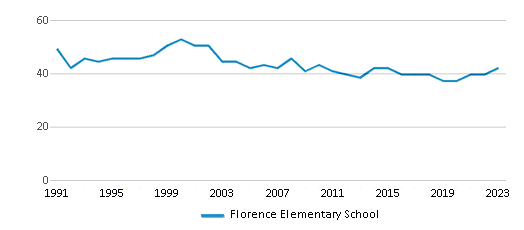
Students by Grade
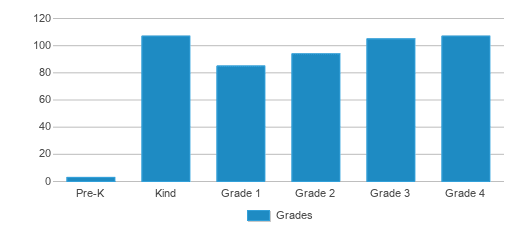
School Rankings
Florence Elementary School ranks within the top 5% of all 8,188 schools in Texas (based off of combined math and reading proficiency testing data).
The diversity score of Florence Elementary School is 0.44, which is less than the diversity score at state average of 0.64. The school's diversity has stayed relatively flat over five school years.
Overall Testing Rank
#140 out of 8188 schools
(Top 5%)
(Top 5%)
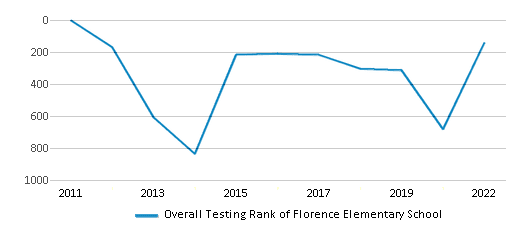
Math Test Scores (% Proficient)
80-84%
41%

Reading/Language Arts Test Scores (% Proficient)
80-84%
51%
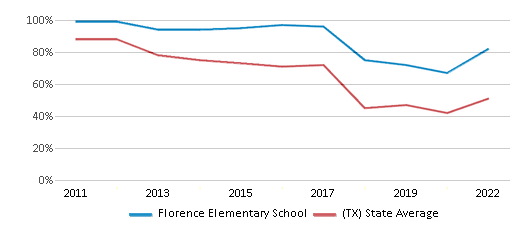
Student : Teacher Ratio
15:1
14:1
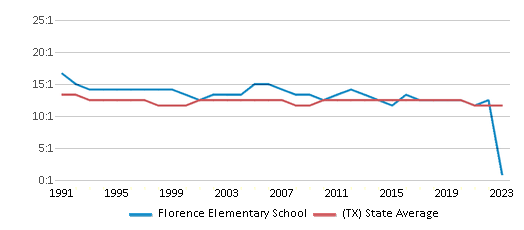
American Indian
n/a
n/a
Asian
5%
6%

Hispanic
15%
53%
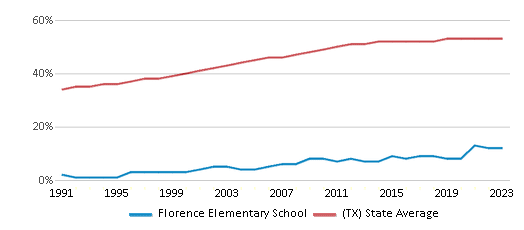
Black
3%
13%

White
73%
25%

Hawaiian
n/a
n/a
Two or more races
4%
3%
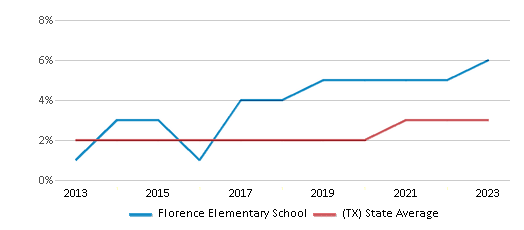
All Ethnic Groups
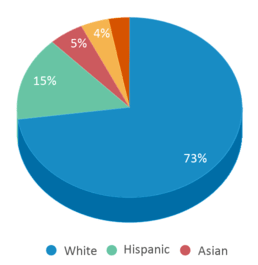
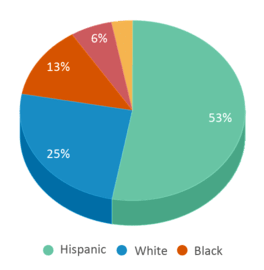
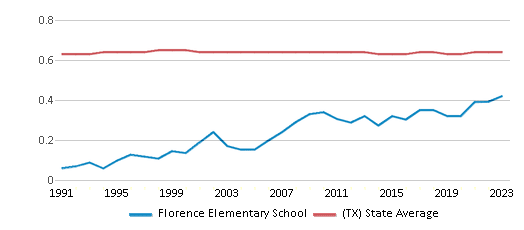
Participates in the National School Lunch Program (NSLP)
Yes
Eligible for Free Lunch
8%
57%
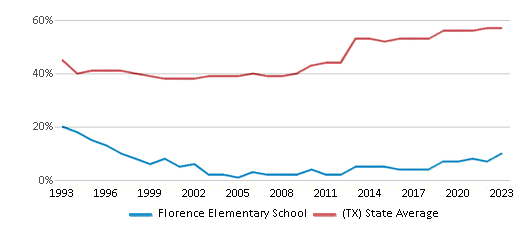
Eligible for Reduced Lunch
1%
5%
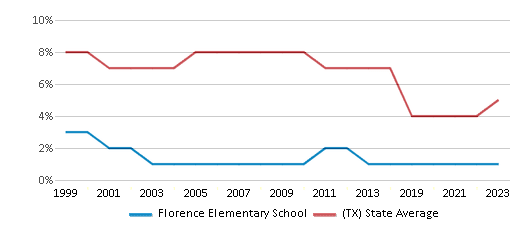
School Statewide Testing
School District Name
Source: National Center for Education Statistics (NCES), TX Dept. of Education
Profile last updated: 02/09/2025
Frequently Asked Questions
What is Florence Elementary School's ranking?
Florence Elementary School is ranked #140 out of 8,188 schools, which ranks it among the top 5% of public schools in Texas.
What schools are Florence Elementary School often compared to?
Florence Elementary Schoolis often viewed alongside schools like Hidden Lakes Elementary School by visitors of our site.
What percent of students have achieved state testing proficiency in math and reading?
80-84% of students have achieved math proficiency (compared to the 41% TX state average), while 80-84% of students have achieved reading proficiency (compared to the 51% TX state average).
How many students attend Florence Elementary School?
501 students attend Florence Elementary School.
What is the racial composition of the student body?
73% of Florence Elementary School students are White, 15% of students are Hispanic, 5% of students are Asian, 4% of students are Two or more races, and 3% of students are Black.
What is the student:teacher ratio of Florence Elementary School?
Florence Elementary School has a student ration of 15:1, which is higher than the Texas state average of 14:1.
What grades does Florence Elementary School offer ?
Florence Elementary School offers enrollment in grades Prekindergarten-4
What school district is Florence Elementary School part of?
Florence Elementary School is part of Keller Independent School District.
School Reviews
2 6/8/2010
I heard this was a great school and the curriculum is. The staff... yes, they are great if you come from money or your child has been attending since kindergarten. My child was harassed by bullies and we were told by the faculty that they only believe the students that have been there longest and that new kids are usually the trouble makers. My once very happy 9 year old who loved school is a severely depressed child who now believes no matter how hard she tries, not only the mean girls but the teachers hate her. The principal never responded to my concerns over the pack of girls that bullied her and sent her into a depressed girl with suicidal thoughts. The Gym teacher made her run on a 100 degree day when she had bronchitis and she was weezing.
Review Florence Elementary School. Reviews should be a few sentences in length. Please include any comments on:
- Quality of academic programs, teachers, and facilities
- Availability of music, art, sports and other extracurricular activities
Recent Articles

What Is A Charter School?
Explore the world of charter schools in this comprehensive guide. Learn about their history, how they operate, and the pros and cons of this educational innovation. Discover key facts about charter schools, including admission policies, demographics, and funding, as well as what to look for when considering a charter school for your child.

10 Reasons Why High School Sports Benefit Students
Discover the 10 compelling reasons why high school sports are beneficial for students. This comprehensive article explores how athletics enhance academic performance, foster personal growth, and develop crucial life skills. From improved fitness and time management to leadership development and community representation, learn why participating in high school sports can be a game-changer for students' overall success and well-being.

February 05, 2025
Understanding the U.S. Department of Education: Structure, Impact, and EvolutionWe explore how the Department of Education shapes American education, from its cabinet-level leadership to its impact on millions of students, written for general audiences seeking clarity on this vital institution.





